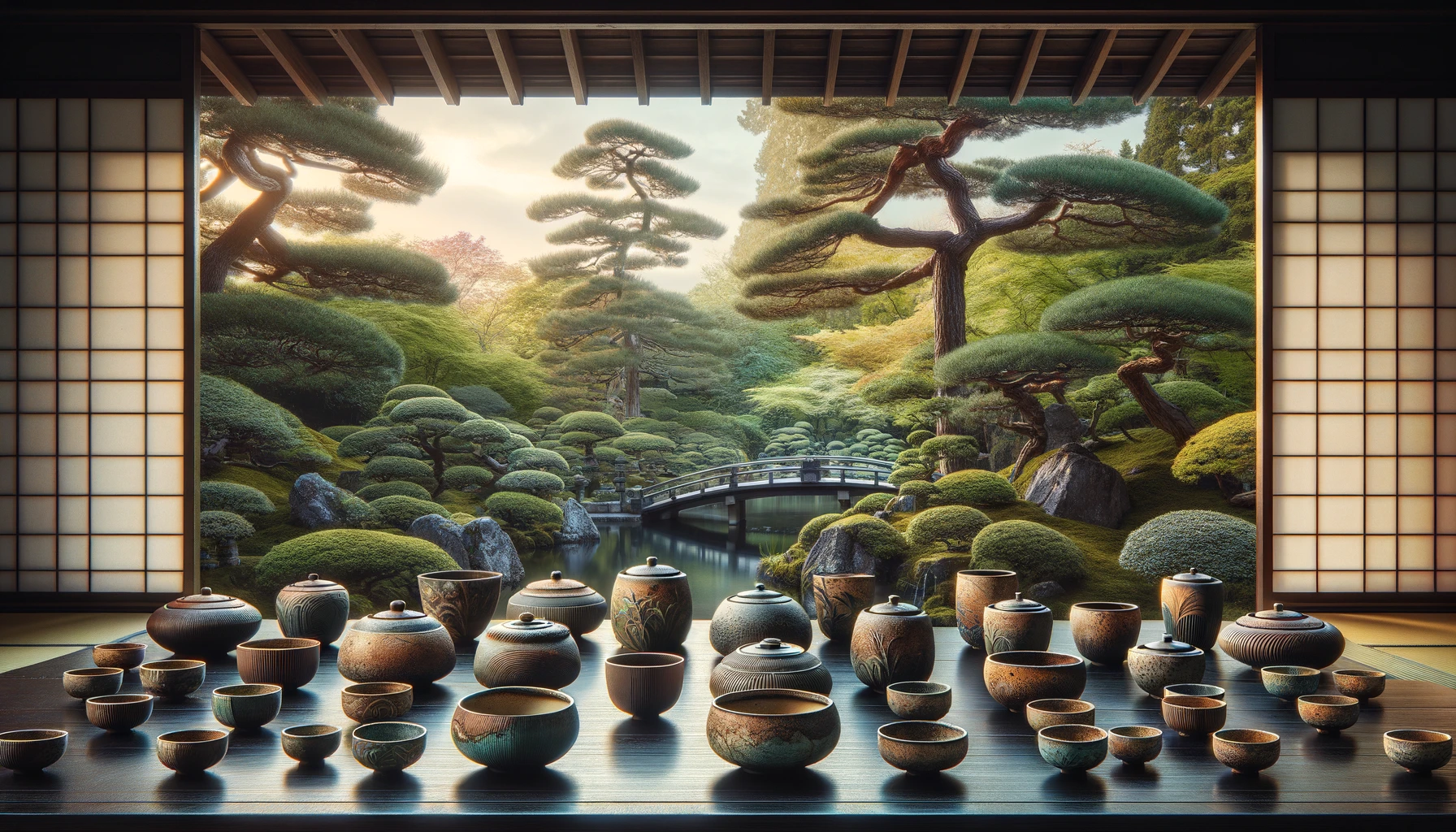Tea Ceramics: Exploring the Artistry of Tea Ware

Tea ceramics, embodying the intersection of art and utility, narrate the evolution of cultural practices and aesthetic ideals through their form, texture, and design.

This exploration into the artistry of tea ware reveals how ceramics have not only served the practical purpose of tea preparation and consumption but have also played a significant role in the rituals and traditions surrounding tea across different cultures.
The Japanese Tea Ceremony and Raku Ware
In Japan, the intimate relationship between tea and ceramics is most vividly expressed in the tea ceremony, a ritual steeped in Zen Buddhism. The ceremony uses a variety of ceramics, often unglazed stonewares like Shigaraki and Bizen ware, which were originally utilitarian vessels for farmers. These ceramics, with their natural ash glazes and unpredictable effects of firing, have been elevated to objects of art by tea practitioners who saw beauty in their rustic simplicity and imperfection, resonating with the wabi aesthetic of transience and understated elegance.
Raku ware, synonymous with the Japanese tea ceremony, encapsulates the essence of wabi-sabi through its hand-molded forms and distinctive low-fired glazes. The technique, which emerged in the 16th century, produces tea bowls that are lightweight and uniquely textured, reflecting the maker’s spirit. Chojiro, the first-generation head of the Raku family, is credited with developing this style, creating tea bowls for the tea master Sen no Rikyu that emphasized refinement and pure beauty. The tradition has been passed down through generations, each contributing their unique seal and style, maintaining the legacy of Raku ware as an art form closely tied to the philosophy of tea.
Iridescence in Raku Ceramics
Raku ceramics are also renowned for their iridescent glazes, a captivating aspect that draws inspiration from natural phenomena such as the shimmering wings of insects or the glossy sheen of stones. This iridescence is achieved through specific glazing techniques that play with color and light, creating surfaces that are visually stunning and rich in texture .
Global Influences and Adaptations
The artistry of tea ceramics extends beyond Japan, reflecting a global exchange of materials, techniques, and aesthetic values. From the ancient Chinese kilns that produced the first tea ceramics to the modern adaptations by artists around the world, tea ceramics continue to evolve, blending tradition with innovation. The appreciation for tea ceramics transcends cultures, highlighting the universal human desire for beauty and connection through the simple act of drinking tea.
Tea ceramics represent a confluence of art, culture, and nature. Through their form, they narrate stories of historical traditions, cultural exchanges, and the ever-present human engagement with the material world. The craftsmanship behind each piece, whether a simple Raku tea bowl or an intricately designed porcelain teapot, speaks to the deep reverence for tea as a source of artistic inspiration and spiritual reflection.
Read more:
Leave a Reply